We start from the Garibaldi police station
In many European cities culture has allowed new life to be brought to buildings and neighbourhoods. The analysis of Jessica Silvani, expert in projects and cultural policies
More than two hundred proposals were made by our readers about the future of the Garibaldi police station through comments and on the Facebook page of VareseNews. All sorts of ideas were submitted, among which the desire of having a theatre or a new green space in the city was frequently asked. Jessica Silvani, expert in projects and cultural policies, intervened on the matter as well: “The Garibaldi police station is collapsing. Politicians, administrators, and citizens and the press, too, have returned to look at what has been under their eyes since far-back: the destruction of a piece of history gravely damaged. Together with the neighbouring square, the police station offered for years a terrible view to citizens and tourists, giving, unfortunately, an example of how restrictions on the patrimony can sometimes, instead of encouraging the safeguard, condemn to immobilisation. But it is also the umpteenth example of how Italians are in the habit of proceeding in case of emergencies, intervening where and when the choice cannot be postponed anymore, instead they are imposed. And in the case of the Garibaldi police station, it seems that, at this point, the only thing that is left to do is to demolish the building.”
According to the expert, “the lack of habit of programming, and of verifying, in the process of policy making, is a bitterly recognised national characteristic in every sector and on every level, it is all the more true in the cultural policy topic, a sector in which, in our country, the ones to be chosen and awarded are most likely the subjects, and not the projects. It’s without any doubt a long-time situation, and the fragmented data, the irregular analysis and the inadequate value interventions can’t be anything else than an improper foundation of organic cultural policies and the realisation of efficient interventions, efficient and fair, capable of achieving results.
In addition, the global financial crisis, that imposed on about every European countries more attentive management and planning of the public expenses in culture. In Italy, it has in some way justified and realised an outlook of continuous cuts and reductions instead of a reform of the system and investment.”
What is happening abroad? Jessica Silvani goes on saying that “During the past years (planning 2007/2013), the culture, or rather the cultural industry, in Europe, explicitly mentioned only in the field of the Aim of agreement of the Structural Funds and the potential of culture as source of social innovation, or its contribution to the urban requalification, and doesn’t find room or allusion elsewhere. However, from a surge from down below, the local authorities of many European territories have adopted a forward-looking vision, integrating the cultural element into regional development policies, because it’s considered as an important factor of attraction. And therefore, according to the study of Use of Structural Funds for Cultural Projects on order of the European Parliament, of the €347 billion that were officially handed out for the purposes of cohesion policies, from 2007 to 2013, about €6 billion were spent in the interest of culture. Almost undoubtedly it’s a matter of an underestimate, since, in the field of Structural Funds, many projects related to the culture, prove to be indeed funded under other forms of expense, such as the innovation or the support of entrepreneurship. Sure enough, it occurs that in the centre of local, regional and national policies of development of many regions or cities it’s filed as a cultural element, and the culture is integrated into other public policies, for example aimed to:
– Developing creative entrepreneurship and talent, such as the case of Tartu Centre for Cls, founded in 2009 by the Commune of Tartu, in Estonia. We are talking about a centre designated for the supervision of creative industries, that provides information, training, legal and financial advice, services of business incubation (with a total budget of about €600,000, part of which is financed by the ERDF, whilst the co-financing on the part of the city was around €50,000);
– Promoting synergy between culture and creativity and other sectors, such as the Budafabriek in Belgium, a production space for artists and other creative minds, hosted in a former textile plant and oriented in promoting the creation of networks and new projects. Originally, the plan was to create an art museum, but the choice to address it to a work and creative space has already had some results, surely, in terms of visibility and participation (the project cost €2.8 million, of which about €700,000 were spent by the city, one million was financed by the ERDF, as much as the government of Flanders had and the rest was co-financed by sponsors);
– Revitalizing neighbourhoods and with this the image of the city, such as in the case of the Quartier de la Création in Nantes, a project that has reinvented the city creating connexions and new activities in the former industrial zone, conceiving the cultural projects as a necessary transit for the construction of an ecosystem suitable to promote the creation of PMI in the field of media and culture (Nantes Métropole benefitted from the financing through numerous projects and programmes: €2.7 million in the field of REVIT, on the restructuring of industrial sites, €3.7 million in the field of ECCE Innovation, on the creation of new jobs in cultural and creative sectors, about €9.2 million came from the ERDF (2007 – 2013) and connected to investments of cultural sort, such as new structures as Ecole des Beaux Arts or La Fabrique in the Quartier de la Création), or the famous case of the Temple Bar in Dublin.
Even though the cohesion policy from 2014 to 2020 does not adequately recognise the potential of culture and its role in sustaining economic development and social inclusion neither, in the “Document of Employment of Services of the Commission – Elements of a strategic communal framework 2014 – 2020 for: the European Regional Development Fund, the European Social Fund, the Cohesion Fund, the European Agricultural Fund for Rural Development and the European Fund for Maritime Affairs and Fisheries” the connexion between culture and strategic fields have clearly been evoked, such as innovation, competitiveness, sustainability, and education that already has a high European level in the Creative Europe programme, of which its first interdictions have already been published. The inauspicious epilogue of the event of the Garibaldi police station could become a new starting point of the city.”
TAG ARTICOLO
La community di VareseNews
Loro ne fanno già parte
Ultimi commenti
mike su La neve in montagna continua a sciogliersi. Contro la siccità si aspetta la pioggia
Felice su La festa "techno" nei boschi di Lonate Ceppino causa proteste
Rolo su Pullman in sosta con i motori accesi, la segnalazione e la risposta di Autolinee Varesine
lenny54 su "C'è del dolo nelle modifiche al Superbonus"
Felice su Architetti, geometri, ingegneri e costruttori all'unisono: "Da Super Bonus a Super Malus"
Felice su Dentro la loggia del Battistero di San Giovanni a Varese restituita alla città


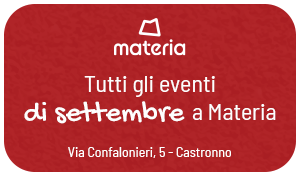
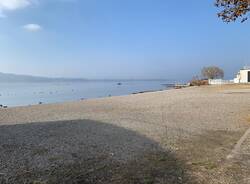
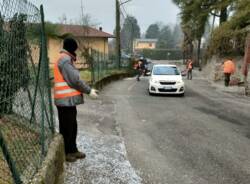
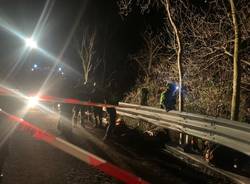

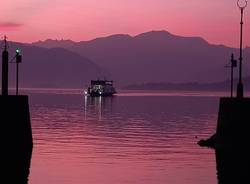
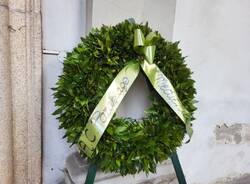






Accedi o registrati per commentare questo articolo.
L'email è richiesta ma non verrà mostrata ai visitatori. Il contenuto di questo commento esprime il pensiero dell'autore e non rappresenta la linea editoriale di VareseNews.it, che rimane autonoma e indipendente. I messaggi inclusi nei commenti non sono testi giornalistici, ma post inviati dai singoli lettori che possono essere automaticamente pubblicati senza filtro preventivo. I commenti che includano uno o più link a siti esterni verranno rimossi in automatico dal sistema.